#abaya printing
Explore tagged Tumblr posts
Text

5 Reasons to Choose Azooni printing for Custom Abaya Printing
we offer high-quality fabrics and custom printing services that let you bring your designs to life. Get started on your project today and take advantage of our competitive pricing.
0 notes
Text

0 notes
Text



Elevate Your Brand with Stunning PRINT Designs!
Sophisticated and elegant Islamic-inspired fashion print pattern that follows Islamic artistic strictures, avoiding depictions of living beings and instead featuring intricate geometric motifs, arabesque flourishes, and calligraphic elements. The design should be suitable for modest fashion, abayas, kaftans, and scarves.
We offer a comprehensive range of creative services to meet the needs of the fashion and textile industries: 1- Digital Print Design Creation – Unique and captivating designs crafted for fashion, home decor, and branding. 2- Embroidery Digitizing – Precise and detailed designs ready for flawless embroidery production. 3- Tech Pack Development – Comprehensive technical documentation for streamlined production processes.
Our mission is to bridge the gap between vision and execution, delivering designs that inspire and solutions that work. Whether you're building a brand or perfecting a product, Apparel Architects is your trusted partner in the journey of innovation and style. Let’s create something extraordinary together!
#PrintDesign #FloralDesign #DigitalPrints #CreativeDesign #embroidery #digitzation #apparel #fashion #textile #techpack #devolopment
#branding#artists on tumblr#fashion#high fashion#printing#print#art print#fashion model#textile art#apparel#islamic#abayafashion#luxury abaya
1 note
·
View note
Text
.
#so just drove and ran to return 3 of the abayas i got#and the place that lets u print labels was next to a pub#and these two white guys was tryna chat me up as i was going in with my parcels 😭😭😭#so awks i shudve taken someone with me#when i was leaving i was facetiming my friend and being like help!!
1 note
·
View note
Text
What is an Abaya? Get the best Abaya
Introduction Have you ever seen a beautiful, flowing dress that many women wear in Pakistan? That dress is called an abaya. An abaya is a traditional and cultural dress worn by Muslim women. It is a long, loose-fitting robe that covers the whole body except the face, hands, and feet. Let’s learn more about abayas and their significance. Description of an Abaya An abaya is usually black, but it…
0 notes
Text
Discovering Halal Fashion: Stylish Attire with Cultural Integrity
Halal Fashion: Navigating Style with Modesty and Grace Halal fashion is more than just clothing; it’s a reflection of style intertwined with cultural values. In this article, we’ll explore Halal fashion and provide examples of what you should wear, embracing both elegance and modesty. Understanding Halal Fashion 1. Modesty in Everyday Wear Halal fashion encourages modesty in everyday wear. Opt…

View On WordPress
#abaya designs#athleisure wear#cultural prints#Halal fashion#hijab styles#modest fashion#sustainable fashion#tailored suits
1 note
·
View note
Text
My Pagan Veiling Tips!
This is my personal tips, if you find that something else works with you, then stick with it, this is just what works for me, and if you find it works, great! Also anyone can veil, remember that.
1. Good quality veils usually are from Muslim shops, here are some I personally use: sunnahstyle.com, hautehijab.com, bazaralhaya.com.
2. Invest in a good undercap (hair net or underscarf) especially if you plan on not showing any hair, I recommend haute hijab or sunnah style for the best undercaps.
3. Scarf magnets are a Godsend! The websites I recommended have good magnetic strength & are inexpensive! Sunnah Style are the cheapest!
4. Rectangle veils are more versatile than square scarves. If you plan on doing many styles, rectangle are the way to go. If you want simple, stick with square.
5. Woven, Chiffon, Mehdina Silk, or other light fabrics are best during Hot weather seasons. Jersey fabric is best for cold weather seasons.
6. Reminder, soft and light fabrics are more likely to slip, so wearing an undercap or magnets will help make the veil stay in place. Heavier fabrics like jersey will usually stay in place, but use magnets if you are in cold season, if you want your scarf to stay snug.
7. Light fabrics are usually less opaque, so folding it will make it least see through. Or simply wear an undercap will help with the opaqueness.
8. Etsy is best for printed veils, otherwise Haute Hijab has a great selection of printed fabrics. But remember, they only have Woven, Pleated, & Chiffon printed fabrics on their website.
9. I recommend SunnahStyle for face veils, mainly since I only bought them from that website, they have many types and colors: half veil, one layer, two layer, three layer, no-pinch (for people who wear glasses or just don’t like the pinching regular veils give), buttoned veils, etc.
10. You will probably get mistaken as a Muslim when wearing these styles, even though there’s historical evidence of the veil belonging in many practices. If you are uncomfortable with the association, I would recommend buying religious symbols or pins to put on your scarves to help differentiate you.
11. Remember, do not overdo yourself. Even wearing the lightest of fabrics, if you are in hot weather, you will still heat up. Please don’t overheat yourself, it’s okay to take off your scarves. Or invest in a portable fan, and drink lots of water to prevent heat exhaustion. Especially if you take meds that make you susceptible to heat.
12. The Gods will not be angry with you if you have to take off your veil, they understand that you are human and that you need to take care of yourself first.
These are some of my tips, if you have any questions, don’t feel afraid to ask or reach out to me. I hope this helps you on your journey!
Here’s the @ I promised when I posted this: @mikeyanderson97
178 notes
·
View notes
Text
Boyah
Boyah (plural: Boyat) was subcultural identity of AFAB non-binary,tomboy,demi girl & trans-masculine folks of Persian Gulf. Boyat are asigned female at birth,but express gender atypical behaviour. The origin of this queer subculture is unclear, some boyat claimed that it was started through online forums & groups. [citation needed]
Boyah subculture was more visible in Gulf states (including Kuwait,Oman,Saudi Arabia,UAE,Bahrain). Boyah identity may fall under the modern Transgender and Non-binary umbrella. However some people may considered them as people of forth gender.
Sexuality
Boyat folk's sexuality can be confusing in various cultural contexts. Most of the Boyat had intimate and romantic relationships with cis-girls in their past life, but they do not consider themselves as homosexual.
The term Boyah itself does not mean lesbian in arabic.In later life many Boyat had to pursue a heterosexual marriage & had children.Because marriage is a obligatory in local arabic customs.In addition to this, some boyah were androsexual & interested in boys only.
Culture & Lifestyle
Trans-masculine/tomboys/AFAB non-binary/AFAB genderpunk took the “Boyah” cultural identity in their early adolescence. On the otherhand, some boyat took the male role to challenge societal gender norms and stereotypes in Arabic Gulf States.
In general, a boyah is characterized by no make-up, no feminine expressions, no feminine name,feminine pronouns.In boyah subculture, Boyat community may use a massive masculine watches.Boyat people worn loose-fitting male cloth with a touch of the military, vibrantly coloured dresses,shirts and boyah jeans(which are baggy with big prints all over them). Since the age of internet Arab's boyat community started informal groups,online forums.
Most of the boyat have to lead double lives because gulf states has strict cultural gender roles especially for womxn.Many of them are forced to get married.In general Boyah phenomena is considered a disgrace to an arab family's honour.Additionally atypical gender expression is seems to be indecent and deviant in GCC states.Many boyat face stigma for not adhering with rigid patriarchal gender roles.
After leaving home, many undergo a radical transformation,changing their clothes at school/college or a friend's house.While in transition ,they run no real risk of being caught because,while in public, Emirates women are required to wear the national dress - a long black over-garment called an abaya, which makes it easier to switch roles without drawing attention.
Media
In general, Gulf media portrays queerness in negetive ways. A Boyah named Abeer appeared on the Saudi TV Show “Ya Hala” where he/ze said that he/ze was attracted to women while still at school. He/Ze had a complete love relationship with a classmate for a long time. Another person named Hamood joined a show of Radio Sawa where he/ze explained ze was rebelling against social (gender) norms and his/zee family’s restrictions through this boyah phenomena.
On a national television of UAE, a boyah named Bandar openly spoke about his queer relationship with another girl and expressed the desire to marry her and have children with her through IVF. His statement on Abu Dhabi's national television shocked the whole nation.
Decline of Boyah Culture
In the Persian Gulf region, boyah identity became very controversial since 2007. In 2007, the Kuwaiti parliament amended Article 198 of the country’s penal code so that anyone “imitating the opposite sex in any way” could face up to a year in jail and/or a fine of 1,000 dinars ($3,500). A further problem was that the law made no attempt to define “imitating the opposite sex” So it was basically left to the discretion of the police. Within a couple of weeks at least 14 people had been arrested in Kuwait City & thrown into prison. Boyat made their debut as a public concern in 2008 when Dubai police denounced cross-dressing - its chief, Dahi Khalfan Tamim, called on the Ministry of Social Affairs to find out how widespread the practice is and what causes it.
In 2009, Dubai launched a public campaign under the slogan "Excuse Me, I am a Girl", which cautioned against “masculine” behaviour among AFAB queers & tomboys and aimed to steer them towards "femininity". The impetus for this was a moral panic which swept through several Gulf states at that time, regarding the Boyah phenomena. 2 months after announcing the campaign the police persecuted 40 people (for their gender atypical expression), imprisoned them for 3 years in jail.In addition, trans-masculine/trans males,trans women,gender-queers were also shamed & abused by the UAE's police team.
Public Attitudes
Many conservative patriarchal arab people see a greater danger in the Boyah subcultural practices; they fear it can become permanent and cause great distress for the women and their families.
Psychiatrist Yousef Abou Allaban says, "It can go extreme, where they change their sex and have an operation.'' Saudi journalist Yousef Al-Qafari said in an interview on Radio Sawa that family disintegration and lack of true love have led women to act like a man. Al-Qafari said education was the best way to tackle this phenomenon.He called on the Ministry of Education to take up this role.
Social worker Nadia Naseer said, “Families play an essential role in such cases. Families should monitor their female members, especially when they start acting like men by cutting their hair short, wearing men’s clothing, or refusing to wear women’s accessories”. She also said, when a girl or woman does this,she is looking for attention & sending a message that she is a boyah.
Saudi writer Randa Alsheikh, in one of her columns, said that she attended a social gathering where she saw a group of females who appeared almost completely like men.“I would not be exaggerating if I say I could not tell the difference between them and men,” she wrote.She said that they looked, talked and walked like men & “even worse” some appeared to be in their 40s. We need to quickly address this phenomenon to contain these girls so that they are able to build good families and a healthy society,”
#Boyah#Booyah#Boyat#arabic#GCC#Persian Gulf#queer#trans masculine#genderqueer#gender variance#AFAB#Middle Eastern#queer culture#cultural gender identity
264 notes
·
View notes
Text
How Does Chiffon Printing Differ from Other Fabrics?

Chiffon is a lightweight, sheer fabric that has gained immense popularity in the fashion industry. Whether used in elegant evening gowns, scarves, or formal wear, chiffon’s delicate nature requires specialized printing techniques to achieve high-quality results. Unlike other fabrics, chiffon printing involves a unique process that enhances its beauty while maintaining its softness and flow.
1. The Nature of Chiffon and Its Printing Challenges
Chiffon is made from silk, polyester, or nylon, giving it a soft, airy feel. Unlike cotton or linen, chiffon has a delicate weave that makes it more challenging to print on. The lightweight and sheer nature of the fabric requires precision in ink application to avoid smudging or distortion of designs. Advanced printing methods like digital sublimation and screen printing are commonly used to ensure intricate patterns appear crisp and vibrant.
2. Ink Absorption and Color Vibrancy
Compared to other fabrics, chiffon does not absorb ink the same way as cotton or wool. Since the fabric is translucent, colors must be carefully applied to maintain their vibrancy without bleeding. Digital and heat transfer printing are preferred for chiffon, as they allow for detailed designs without compromising the fabric’s texture.
3. Durability and Washability
Fabrics like cotton and polyester have a higher resistance to frequent washing, while chiffon requires gentle care to preserve printed patterns. Unlike heavier textiles, chiffon prints may fade if washed improperly. This is why fabric printing specialists use high-quality dyes and fixatives to ensure that the designs remain vibrant even after multiple wears.
4. Printing Techniques Best Suited for Chiffon
Unlike fabrics such as denim or canvas that can withstand traditional screen printing, chiffon benefits more from sublimation or reactive dye printing. These techniques allow the design to bond with the fabric fibers without affecting its softness or causing stiffness. The result is a breathable, lightweight material with flawless prints.
Conclusion
Chiffon printing differs significantly from printing on other fabrics due to its delicate texture, ink absorption, and durability requirements. By using specialized techniques, designers can create stunning patterns without compromising the fabric’s natural elegance. If you’re looking for high-quality chiffon printing solutions, visit Azooni Prints today!
0 notes
Text
Premium Abaya Printing Services by Oman Azooni Prints
Discover exceptional abaya printing services with Oman Azooni Prints. Our designs blend cultural elegance with modern artistry, offering customized prints that enhance the beauty of every abaya. From intricate patterns to vibrant colors, trust Oman Azooni Prints for premium quality and timeless style. Visit our website for more information - https://www.oman.azooniprints.com/
0 notes
Text
Discover the Elegance of Islamic Fashion: Beautiful Muslim Gowns and Outfits for Every Occasion
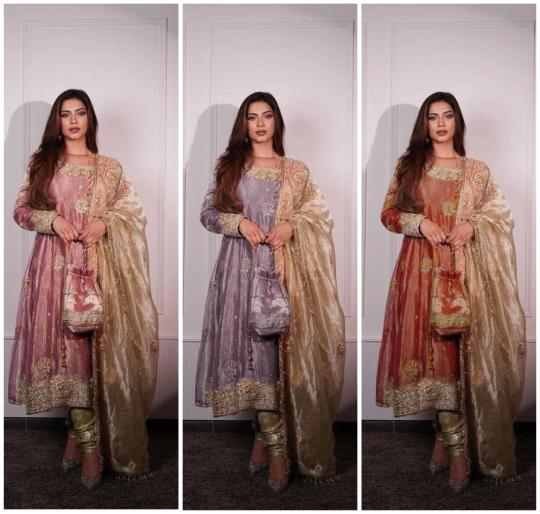
Islamic fashion has always been a beautiful blend of modesty, tradition, and contemporary style. Whether you're looking for beautiful Muslim gowns, traditional Muslim wear, or modern Islamic gown styles, there’s something for everyone in the world of Muslim fashion. From party wear gowns with hijab to simple gowns with hijab, this guide will help you explore the latest trends and timeless designs that celebrate faith and fashion.
The Timeless Appeal of Beautiful Muslim Gowns Beautiful Muslim gowns are more than just clothing; they are a reflection of grace, elegance, and cultural heritage. These gowns are designed to provide modesty without compromising on style. Whether you're attending a wedding, Eid celebration, or a casual gathering, there’s a perfect gown for every occasion.
From flowing abayas to intricately embroidered kaftans, Muslim gown styles offer a wide range of options. For those who prefer simplicity, a simple Muslim gown with minimal embellishments can be both chic and comfortable. On the other hand, if you're looking to make a statement, a party wear gown with hijab featuring luxurious fabrics and intricate details is the way to go.
Traditional Muslim Wear: A Celebration of Culture Traditional Muslim wear holds a special place in Islamic fashion. These outfits are deeply rooted in cultural heritage and are often passed down through generations. Think of stunning jalabiyas, thobes, and abayas that feature traditional embroidery, rich fabrics, and timeless silhouettes.

For modern women who want to embrace tradition with a contemporary twist, many designers are now blending classic elements with modern cuts. This fusion creates Islamic gown styles that are perfect for today’s fashion-conscious Muslim woman.
Muslim Gowns for Every Occasion
Party Wear Gown with Hijab When it comes to special occasions, a party wear gown with hijab is a must-have in your wardrobe. These gowns often feature luxurious fabrics like chiffon, silk, or satin, adorned with sequins, beads, or lace. Pair them with a matching hijab for a complete, elegant look.
Simple Gown with Hijab For everyday wear or casual events, a simple gown with hijab is the perfect choice. These gowns are comfortable, versatile, and easy to style. Opt for neutral tones or pastel shades for a soft, understated look.
Simple Muslim Gown A simple Muslim gown is ideal for those who prefer minimalistic designs. These gowns often feature clean lines, lightweight fabrics, and subtle details, making them perfect for both casual and formal settings.
Explore the Latest Muslim Gown Styles The world of Muslim gown styles is constantly evolving, with designers introducing new trends each season. Here are some popular styles to look out for: Embroidered Gowns: Intricate embroidery adds a touch of sophistication to any gown. Layered Gowns: Layered designs create a flowing, elegant silhouette. Belted Gowns: Adding a belt to your gown can accentuate your waist and add a modern touch. Floral Prints: Floral patterns are perfect for spring and summer events.
Tips for Styling Your Muslim Gown Accessorize Wisely: Pair your gown with elegant jewelry, such as statement earrings or a delicate bracelet. Choose the Right Hijab: Match your hijab to your gown for a cohesive look, or opt for a contrasting color to make a bold statement. Comfort is Key: Ensure your gown fits well and is made from breathable fabrics, especially for longer events.
Conclusion Islamic fashion is a beautiful celebration of modesty, culture, and style. Whether you're looking for beautiful Muslim outfits, traditional Muslim wear, or the latest Muslim gown styles, there’s something for every occasion and personal taste. From party wear gowns with hijab to simple gowns with hijab, these outfits allow you to express your faith and fashion sense with confidence. Explore the world of Islamic fashion today and discover the perfect gown that makes you feel beautiful, empowered, and connected to your heritage.
#beautiful muslim gowns#beautiful muslim outfits#traditional muslim wear#muslim gowns styles#party wear gown with hijab#simple gown with hijab#simple muslim gown#islamic gown styles
2 notes
·
View notes
Text




Elevate Your Brand with Stunning PRINT Designs!
Sophisticated and elegant Islamic-inspired fashion print pattern that follows Islamic artistic strictures, avoiding depictions of living beings and instead featuring intricate geometric motifs, arabesque flourishes, and calligraphic elements. The design should be suitable for modest fashion, abayas, kaftans, and scarves.
We offer a comprehensive range of creative services to meet the needs of the fashion and textile industries: 1- Digital Print Design Creation – Unique and captivating designs crafted for fashion, home decor, and branding. 2- Embroidery Digitizing – Precise and detailed designs ready for flawless embroidery production. 3- Tech Pack Development – Comprehensive technical documentation for streamlined production processes.
Our mission is to bridge the gap between vision and execution, delivering designs that inspire and solutions that work. Whether you're building a brand or perfecting a product, Apparel Architects is your trusted partner in the journey of innovation and style. Let’s create something extraordinary together!
#PrintDesign #FloralDesign #DigitalPrints #CreativeDesign #embroidery #digitzation #apparel #fashion #textile #techpack #devolopment
#branding#artists on tumblr#fashion#printing#print#art print#creative design#designer#graphic design#design#creative#designinspiration#minimalist#print on demand#printmaking#islamic art
4 notes
·
View notes
Text
Latest Trendy Abaya Designs for Modern Women
Check out this video showcasing the most fashionable and stylish abaya designs for modern Muslim women. From elegant black abayas with lace and embroidery to colorful abayas with prints and patterns, see the diverse range of modest yet trendy abayas perfect for any occasion. Whether you prefer traditional or contemporary styles, you'll find modern abaya outfit to add to your wardrobe.
4 notes
·
View notes
Text
Woodstock.
Woodstock, the most famous of the 1960s rock festivals, held on a farm property in Bethel, New York, August 15–18, 1969, at the end of the hippie movement. The hippie flower child look from the late 1960's carried over into the first half of the 1970's, in a non-restrictive bohemian silhouette with a heavy folksy influence. Arts and crafts had a huge impact on fashion during this time including tie-dye, batik, knitwear, crochet and macrame.
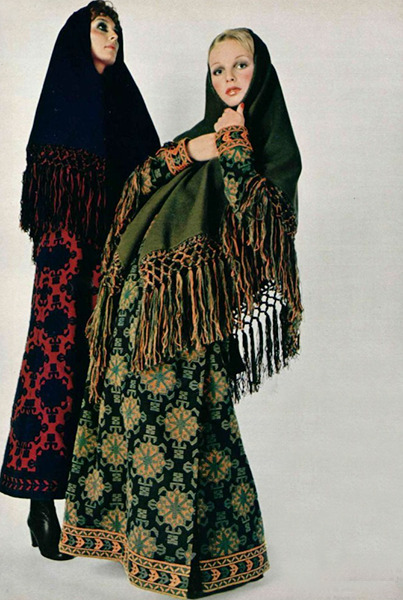
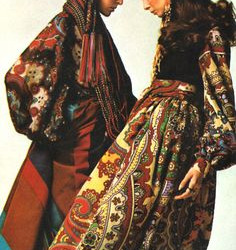
1970s Gunne Sax dresses.
Gunne Sax's aesthetic has been described as feminine, nostalgic, Victorian, old world and romantic. Though the brand is now closely associated with formal and bridal wear, its origins date back to late '60s San Francisco. In 1969, San Francisco boutique Gunne Sax needed a house designer. Enter Jessica McClintock, an elementary school teacher with a life-long interest in fashion. When a friend told McClintock of the opening at Gunne Sax, she applied immediately. McClintock was hired despite her lack of formal training in fashion design or clothing manufacture. Herself and designer Laura Ashley popularized the prairie dress phenomenon.
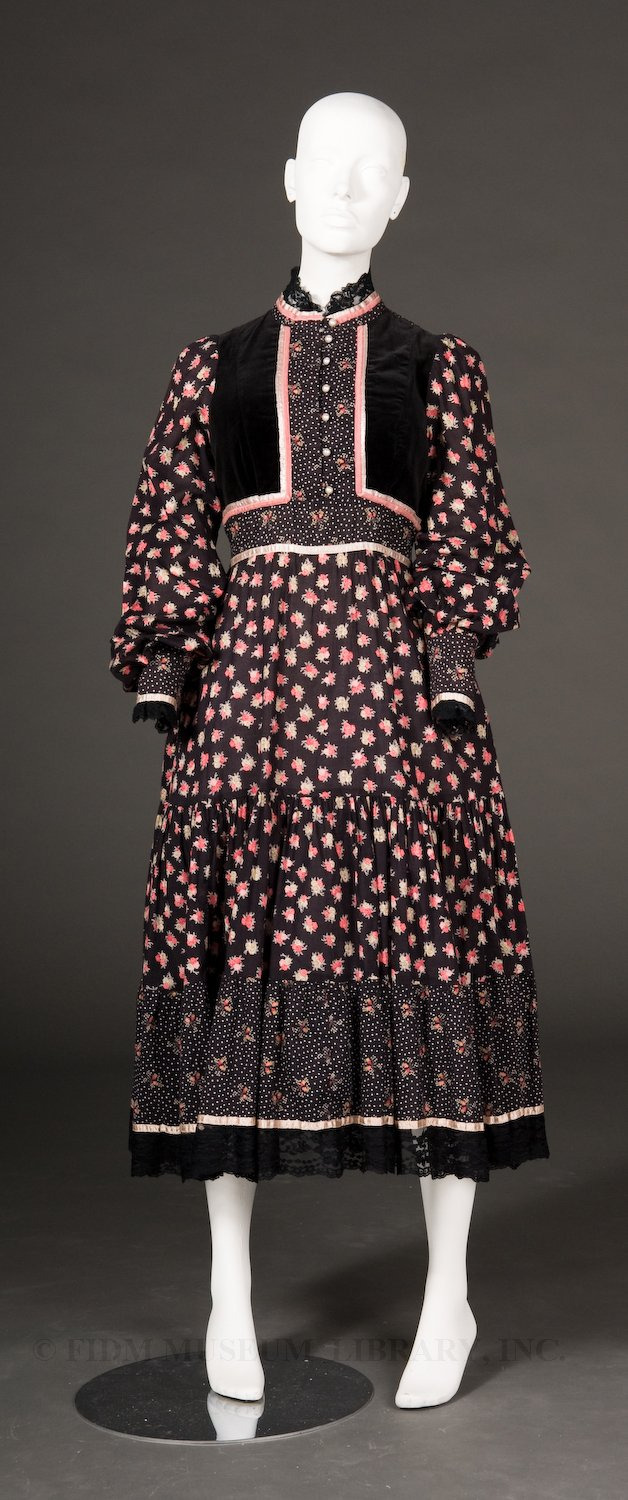

Sometimes referred to as Granny or prairie dresses, a typical Gunne Sax dress of the early 1970s featured a banded Empire waist and a long maxi-skirt. Lace trim, high collars and long sleeves evoked an amalgam of past eras and created an overall impression of demure femininity.
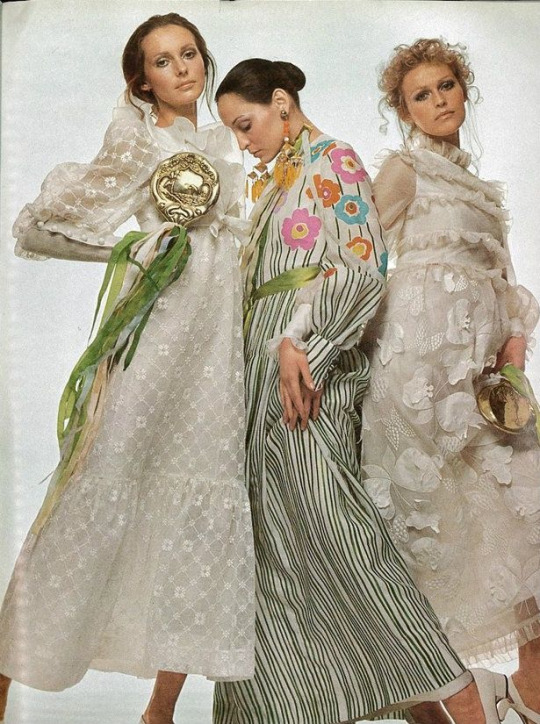
Vogue Italia March 1970.
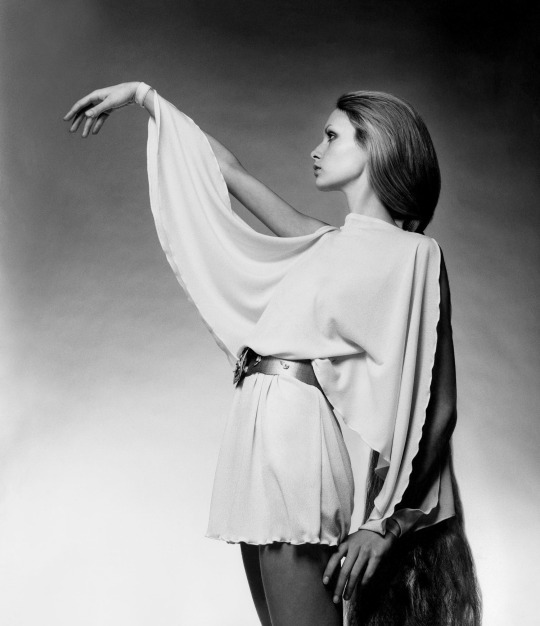
Twiggy for Vogue 1970
Thea Porter, Godmother of Bohemian Cheque.
Thea Porter, who is credited with bringing the bohemian look to London catwalks. Although Thea Porter is not as famous a name as Mary Quant or Laura Ashley, her influence on the look of her era is just as potent. Her loose, draped shapes and fabrics helped create the style of stars such as Faye Dunaway and Elizabeth Taylor in the 1970s, and they have since become forever entangled with the idea of rock-star self-indulgence. She celebrated ethnic styles in Indian style prints, free flowing breezy gauzy tent dresses and wide legged pants.
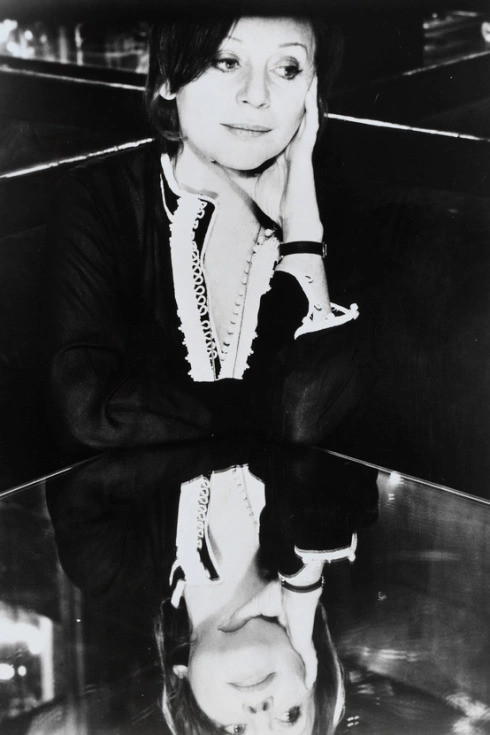
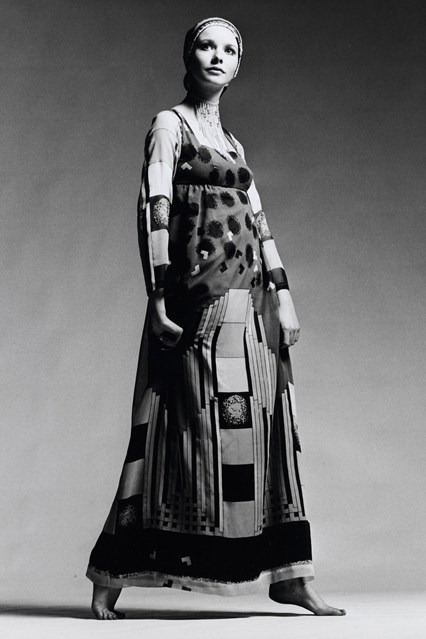

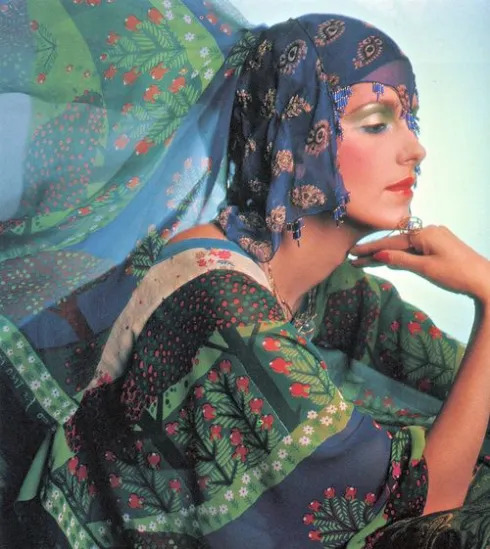
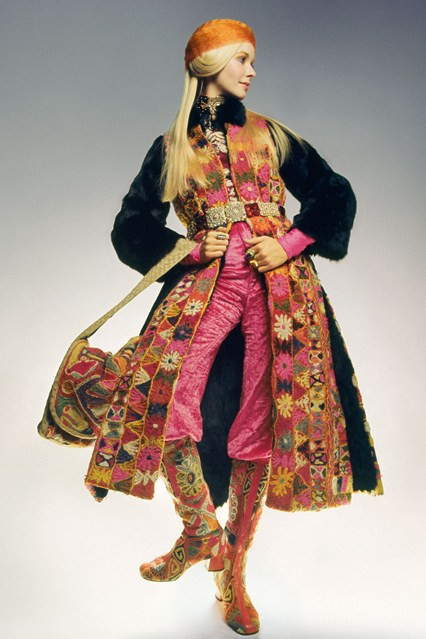
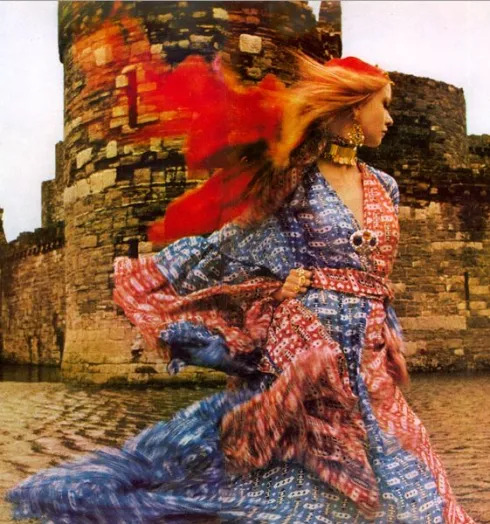
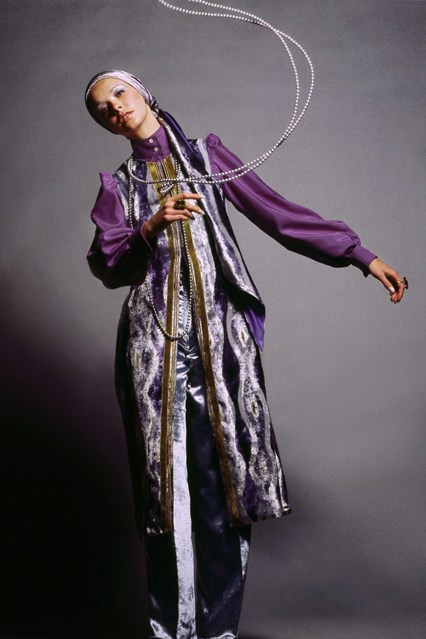
Porter's seven signature looks: the Abaya & Kaftan; the Gipsy dress; the Fraye dress; the Brocade-panel dress; the Wrap-over dress; the Chazara jacket, and the Sirwal skirt, as well as important fashion photography from the pages of Vogue, Harper's Bazaar and Women's Wear.
Changing skirt sizes.
This was the year of the changing hemline. There is no longer one length for one woman, but a whole wardrobe of lengths from which to choose. Mini, regular, midi and maxi length. Both emerald and bottle green were popular colours of the 1970s along with rust, wine red, purple, orange, and brown.
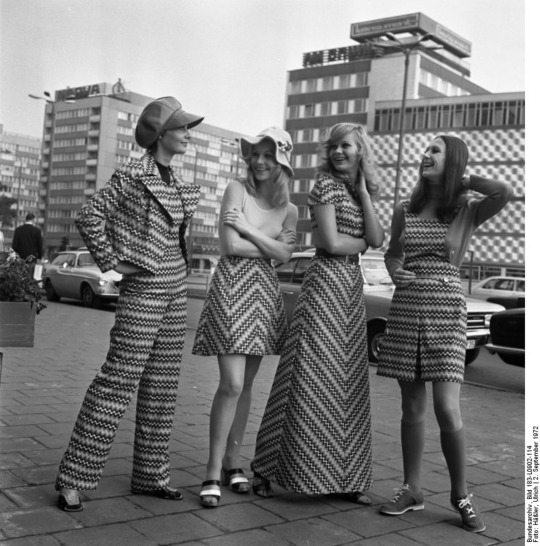
Tom Wolfe called the 1970s the "me decade" Across the land, Americans seemed determined to escape from the wars and social movements of the previous decade. Disillusionment with national and global action led many to look inward and find solace in discovering more about themselves. Women demanded respect as equal partners, and began to emerge into the work place. As women asserted themselves economically, socially, and politically, the idea of remaining trapped in an unhappy marriage became less and less appealing. Consequently, the divorce rate soared. An 1974 book entitled the courage to divorce encouraged individuals to put their own happiness above that of their spouses and children.
Every rule of fashion was shattered in the 1970s. Lapels, ties, and collars, reached record widths. The polyester leisure suit, available in a palette of citrus and pastel colors, was extremely popular among young males. The jacket, pants, and vest were often worn with an open collar to display thick necklace chains nestled in exposed chest hair. A senses of masculine style emerged in the film 'Annie Hall' which created a sensation with Diane Keaton wearing a fitted vest with a collard white shirt and men's neckties.
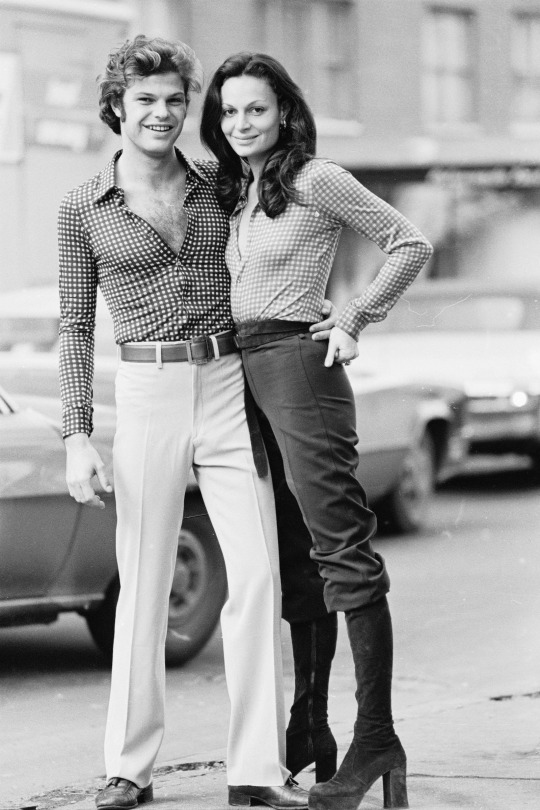

7 notes
·
View notes
Text
Modern Arabic Clothing: A Blend of Tradition and Contemporary Style
Modern Arabic clothing represents a unique fusion of traditional elements and contemporary fashion trends, creating an array of garments that honor cultural heritage while embracing modern aesthetics. This blend of old and new is evident in the designs, fabrics, and styles that are popular today, reflecting a dynamic evolution in the fashion industry. At the forefront of this transformation is the renowned brand, Ahmed Alabady, which has become synonymous with high-quality and innovative Arabic fashion.
Traditionally, Arabic clothing has been characterized by its modesty and elegance. Garments such as the abaya, thawb, and hijab are not only cultural symbols but also reflect the principles of modesty in Islam. However, modern Arabic clothing has introduced new design elements that cater to contemporary tastes without compromising these values. For instance, abayas now come in a variety of cuts, colors, and fabrics, featuring intricate embroidery, lace, and even sequins to appeal to fashion-forward individuals.
Ahmed Alabady has played a pivotal role in this transformation. The company’s designers skillfully merge traditional silhouettes with modern trends, offering a diverse range of clothing that appeals to a global audience. Their collections include chic abayas with asymmetrical designs, tailored kaftans that highlight the waist, and stylish hijabs in bold prints and vibrant colors. These innovations make it possible for women to express their individuality and style while adhering to cultural norms.
The fabric selection is another crucial aspect of modern Arabic clothing. Whereas traditional garments were primarily made from cotton or wool to suit the desert climate, contemporary designs by Ahmed Alabady utilize a variety of materials, including silk, chiffon, and jersey. These fabrics not only enhance comfort but also add a luxurious feel to the garments, making them suitable for both casual and formal occasions.
Men's fashion has also seen significant changes. Traditional thawbs have been updated with modern cuts and embellishments, offering a more tailored and sophisticated look. Ahmed Alabady’s men’s collection includes thawbs with unique collar designs, cufflinks, and even subtle embroidery, ensuring that men too can enjoy a modern yet respectful approach to traditional attire.
In conclusion, modern Arabic clothing exemplifies the perfect blend of tradition and contemporary style, thanks to innovative brands like Ahmed Alabady. By respecting cultural values while embracing modernity, Ahmed Alabady continues to lead the way in providing fashionable and versatile options for those who wish to celebrate their heritage with a modern twist. This approach not only preserves the essence of Arabic fashion but also ensures its relevance in today’s ever-evolving fashion landscape
For More Info :-
Arabic Language T-shirts
2 notes
·
View notes